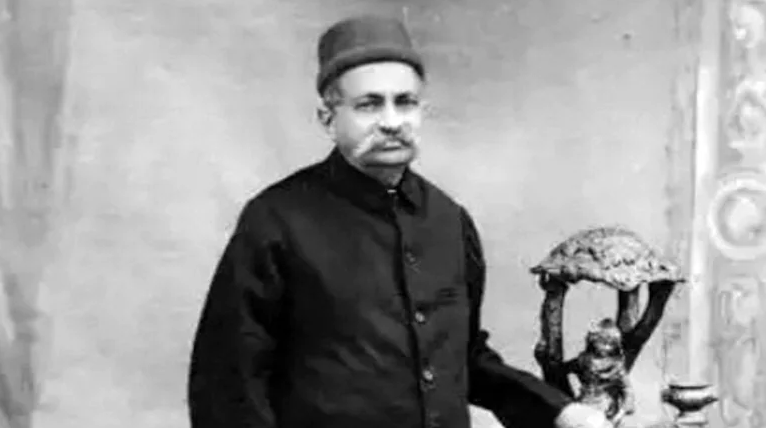Jamshedji Framji Madan, the Parsi entrepreneur, was the torchbearer of the Indian film industry. Read his story here.
Indian cinema found its footing in the nineteenth-century. At the time, entrepreneurs experimented with new formats by mixing technology with storytelling. Short, silent films–a new invention at the time–produced in the colonial era, created a sensation. Filmmakers such as Hiralal Sen, Dada Saheb Phalke, and Harishchandra Sakharam Bhatavdekar made a name for themselves in the film industry.
Article by Ayushi Kalyani | Madras Courier
Long before films became a popular medium in India, theatre dominated the entertainment and arts scene. Most of the theatre production companies were owned by the Parsis of Bombay. However, most theatrical shows and productions were had a limited target audience–British officials and the English public.
With the advent of the films in India, the Times of India published an article lamenting that “our Parsi friends” were uninterested in film production. It was an unusual comment, for, practically every industry at the time–be it politics, commerce, or entertainment–was owned or influenced by the Parsis.
Despite their slow start in the new medium, the Parsis were able to grab the opportunity, adding a third C to their previously established supremacy in the other two industries: commerce and cricket. Jamshedji Framji Madan founded Madan Theatres Limited and built it into an artistic and filmmaking behemoth. The firm rose to prominence in Indian theatre and dominated the industry throughout the 1920s and 1930s.
Born into a Parsi family, on April 27, 1857, Madan pioneered film production in India. He moved to Calcutta at a young age and took a great interest in theatre. The theatre in Calcutta, which experienced a rebirth in the 1830s, peaked during Madan’s time. He started as a prop boy but began travelling across the country looking for acting opportunities.
In 1873, Elphinstone, a production company, offered Madan a role in Sulemani Shamsher by Nusserwanji Parekh. Later, in the 1890s, Madan bought Elphinstone. Elphinstone had a substantial presence in the industry when Madan purchased it along with Khatau-Alfred, another prominent theatre company. He also acquired their creative personnel and repertoire rights. He relocated to Calcutta in 1902 and rebranded it J.F. Madan & Sons.
Madan was an established entrepreneur. He maintained his other businesses–such as importing food, alcohol, and pharmaceutics–under the same name. He even had a hand in real estate.
The company had humble beginnings. First, they launched ‘bioscope’ shows–screened imported films in Maidan or the Brigade Parade Ground of Calcutta. Then they became known for screening and distributing foreign films. Under the name of Elphinstone Bioscope Company, they made the initial foray into film distribution and exhibition by acquiring the rights to exhibit films produced by foreign studios.
In 1907, Madan constructed the first of many film theatres owned by his company, the Elphinstone Picture Palace, now known as the Chaplin Cinema. It was the first show house in Calcutta.
In 1919, J.F. Madan & Sons became a joint-stock company under Madan Theatres Limited. Madan Theatres steadily expanded the properties bought or leased in areas populated by Europeans. The costs were exorbitant, and their events catered mostly to the military personnel, particularly during World War I. By 1927, the 172 theatres registered under the company name collected over half of India’s box office profits.
After the war, Madan expanded his footprint beyond British films. In the 1920s, they became one of the first importers of Hollywood films.
While Phalke was the first to make the Indian feature film, Madan Theatre’s contribution to the Silent Film Industry is unmatched. In 1917, Madan produced the first feature Bengali film Nal Damyanti with Italian actors. In the same year, he produced Satyavadi Raja Harishchandra, a shortened version of Phalke’s title bearer Raja Harishchandra, widely regarded as India’s first feature-length cinema. The first talkie film in Bengali, Jamai Shashthi, was also produced and screened by the Madan Theatres in 1931.
Toward the end of Indian cinema’s silent film era, Madan Theatres also spearheaded the production of non-mythological and social movies. They employed many important foreign directors, actors, and personnel for film production.
After Madan died in 1923, his third son, J.J. Madan took over as the Managing Director of Madan Theatres and led the company into its peak years. Madan Theatres came a long way: from screening in the tents to becoming the largest film production, distribution, and exhibition company in India, Burma, and Ceylon,
The 1930s saw a slow decline of the company. As the silent-film era came to an end, Madan Theatres invested heavily into sound conversions, a move that put heavy financial strain on the company. Moreover, the company had become too large to be managed efficiently. Finally, a failed deal with Columbia pictures depleted the company’s finances and the company was closed.
Today, many of the theatres that once belonged to the Madan Family face demolition. However, Jamshedji Framji Madan and his company have marked their legacy in the history of Indian cinema. Madan was not just the champion of cinema, he was the torchbearer of the Indian film industry.
-30-
Copyright©Madras Courier, All Rights Reserved.

